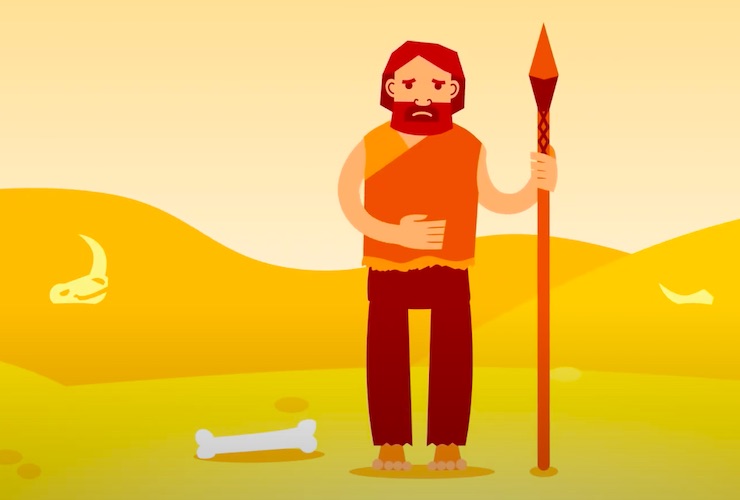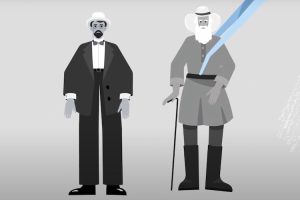The History in Our Genes
Exploring genetic similarities between human populations can help to fill gaps in history books

People in the contemporary world are forced to confront human violence that is repetitive and organized. People have become interested more and more in knowing what the causes and the sources of this type of human aggression toward other people are. When you look deeply at that question, you are forced to be comparative. You are forced to look at other examples in history. When the Spaniards came to Mesoamerica in 1517, they encountered the ritually violent practices of the Maya and the Aztecs. Those ritual practices were in public, and people knew they were part of a calendar schedule. One reason to look at Aztec sacrifices is to see if there are any keys to the human proclivity for ritual violence, repeated wars, violence against people of color, to the way women are often treated violently. These are very troubling common practices, and it is important to not just think that they happened long ago. And so one of the reasons to look at this is to try to understand the Aztecs and to see if they help us understand ourselves.
We know about human sacrifice in Aztec culture from an array of evidence. First of all, we have prehispanic codices that have survived. In those pictorial manuscripts, we see many scenes of sacrifice, both human sacrifice and the sacrifice of gods. Secondly, we have interviews that took place between Spanish priests and indigenous Aztecs during the conquest of Mexico, wherein we have many accounts of sacrificial rituals. The most impressive empirical record comes from “The Florentine Codex”, which is currently in the Laurentian Library in Florence. These are interviews that took place in Mexico City between 1540 and 1580. We have detailed descriptions of ritual sequences of the 18 ceremonies where human sacrifice took place.
Thirdly, we have eyewitness accounts of the Spaniards who saw the sacrifices taking place, sometimes sacrifices of Spaniards by Aztecs. Archeology is the fourth source. In the archeological record, we have the remains of people who were sacrificed, and we have proof that they were sacrificed – the marks on their skeletons. Moreover, we have sculptures that show sacrifice, and we have other kinds of ritual objects used in sacrifice. So, there are four main sources: pictorial manuscripts, eyewitness accounts, interviews, and actual Aztec archeology.
What we call the Aztecs only existed between 1325 and 1525. That is the historical period of Aztec sacrifices. Ritual human sacrifices were practiced well before the Aztecs came into the valley of Mexico in the first part of the 14th century. There are strong indications that the ritual killing of people and animals took place in the second millennium BCE. One aspect which distinguishes the Aztec period sacrifice was an escalation of ritual human sacrifice. We see the escalation of sacrifice from about 1440 to about 1521, beginning when the first Moctezuma comes into power. He reigned for many years, and during his time, the empire expanded. One interesting parallel is that as the empire expands, the size of the Great Aztec Temple also expands, and human sacrifice increases. That is the period of time that we are talking about today.
We do not know exactly who invented human sacrifice, but in Mesoamerican records, before the Aztecs, we have the Toltecs. The Toltecs were from about 900 to 1200 AD. And they had human sacrifice. Prior to and during this Toltec period, there were sacrifices among the Maya and in the great imperial capital of Teotihuacan in central Mesoamerica. So human sacrifice was a widespread practice in Mesoamerica from very early on in the rise of urban civilization.
As an Aztec state-sponsored ritual practice, human sacrifice ends in the 1520s. There are some records of a few sacrifices taking place after the Spaniards arrive, but the state-sponsored ritual sacrifices end in the first ten years after the arrival of the Spaniards. Then the Spaniards replaced it with their own kind of violence. One scholar makes the comparison between Aztec and Spanish violence this way. The Aztecs built a sacrifice society, while the Spaniards built a mass-sacrifice society.
The Aztec theology justified ritual human sacrifice in the following terms. Human bodies had two selves: there were a shell and a divine spark that was deposited by divinities at the time of conception. The gods and the universe they created needed to be periodically regenerated through the sacrifice and release of the divine sparks within the bodies of humans, plants, insects, and animals. Death by normal or ritual means releasing the divine spark which descended into the earth, the underworld, and collected a new shell or matter. When plants, the Sun, the Moon, animals, or humans reappear on the surface of the earth, they contain that recycled divine spark that continues to live on in a cycle of birth, death, and rebirth.
Blood is one of the carriers of this divine spark. In the Aztec world, everybody was involved in bloodletting. Blood was ‘let’ from lips, ears, and thighs, with the most devout priests letting blood from tongues and even genitals. This is the theological justification.
The second purpose of the sacrifice was political. Many Aztec sacrifices took place for public viewing in order to show the religious legitimacy of the rulers and their military policies or the need to ensure agricultural fertility. In a few cases, the rulers of allied or enemy cities were brought to the capital to view the sacrifice of their own captured warriors.
An extraordinary example of how the Aztecs chose a person for sacrifice can be seen in the 5th month of the ritual calendar, which was dedicated to both fertility and male beauty. They chose a person whom they considered to be the most handsome male. There is a wonderful description of how this person was chosen. They had a formula for this month of what the male sacrificial victim would look like. So what they did – they captured warriors, and they kept them in a certain area, and they looked for the best-looking one. We have a description:
It goes on and on like this about every aspect of his body: «He was not long-handed, he was not one-handed, he was not handless, he was not fat-fingered, and it goes on, talks about the stomach. He had no blemish, he had no mark, he was taken the greatest care, and he would be taught to blow the flute, and he would be able to play his whistle. At the same time, he would hold all his flowers and his smoking tube”.
They were looking for a very good-looking man, according to their standard. They would take this person and teach him how to hold and work with flowers, how to play flutes, and how to speak Nahuatl, the Aztec language, in a sophisticated way. For one year, he lived in the Aztec city as a god. He had been ritually transformed into a divine being and was given the best food and care and always traveled with an entourage, including guards. According to one reliable source, he was given 4 divinized women for companionship and sexual activity as a way of regenerating the cosmos. Near the end, he was taken out of the island city and led to climbing a small pyramid, breaking his flutes on the ascent, and then he was sacrificed. Children and women were sacrificed in some of the other monthly rituals. We have detailed descriptions of these sacrifices as well.
What all this teaches us is that a sacrifice was seen as an honor. It was an elevation, and while members of families were sad or disturbed by losing someone close, Aztec ideology labeled those who were sacrificed as divine beings whose death helped regenerate the cosmos.

Exploring genetic similarities between human populations can help to fill gaps in history books

Historian of science Loren R. Graham on the mistakes Russian leaders make, intellectual property and risky inv...

Archeologist Tim Reynolds on Mousterian tools, cross-species interactions, and Neanderthal language